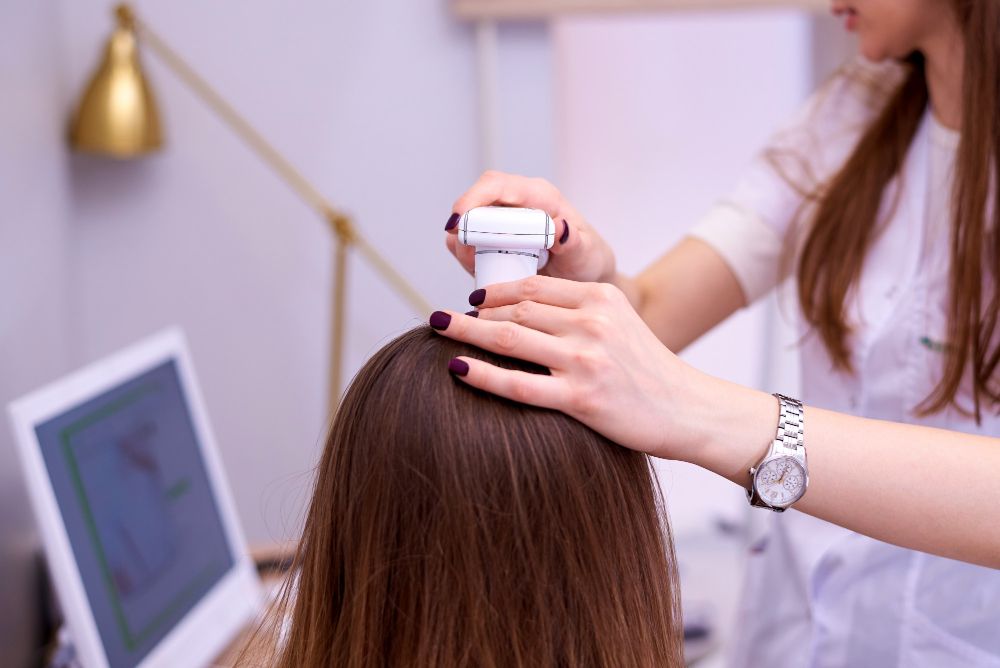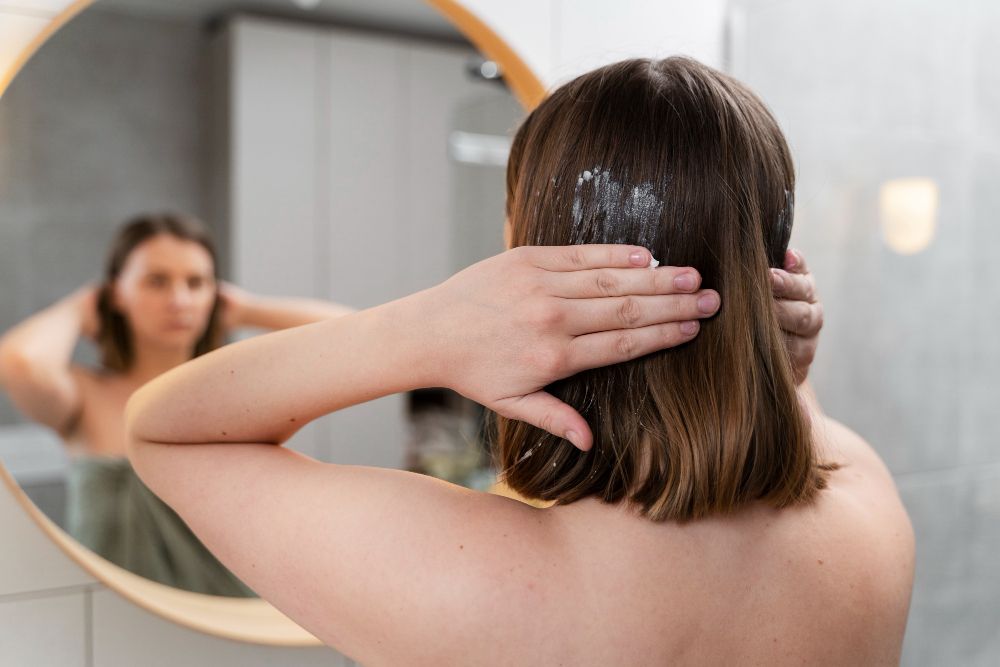- Home
- Trend
- Weight Loss Strategies
- Acne Tips
- Hair Health Information
- Blemish Removal Tips
- Acne Scar Removal Tips
- Muscle Building Techniques
- Intimate Care Tips
- Postpartum Intimate Care
- Eye Bags Wiki
- Tips for Face Slimming
- Secret of Permanent Hair Removal
- Breast Enlargement Tips
- Cure to Snoring
- Marionette Lines
- Skin-Tightening Secrets

免費體驗
F8 Hair Regrowth Treatment
1 Minute Self-Registration
Date should not be before minimal date
A receding hairline is a common concern for many individuals, impacting both men and women. It can have a significant emotional and psychological effect on self-esteem and confidence. In this informative article, we will delve into the intricacies of a receding hairline, from understanding its causes to exploring effective treatments. Whether you're experiencing hair loss or simply seeking to learn more, this guide aims to provide you with the knowledge and solutions you need.
1
Receding Hairline: The Basics
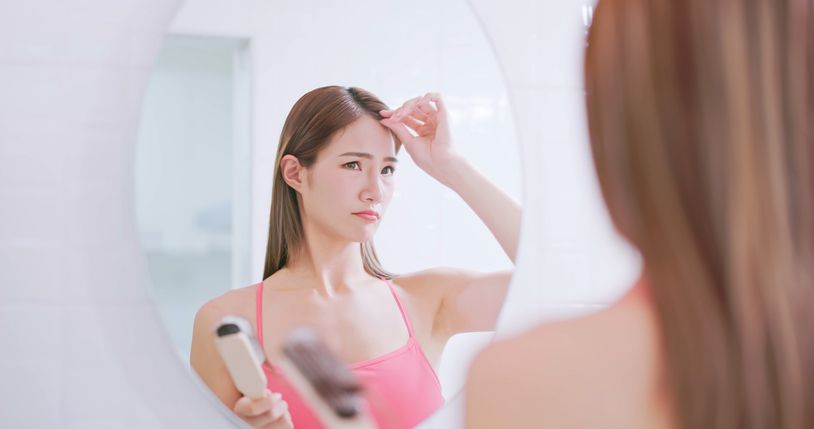
Hair loss, often characterised by a receding hairline, is a natural part of the ageing process. However, several factors can accelerate this condition, leading to premature hair thinning and receding. Let's delve deeper into this phenomenon. A receding hairline refers to the gradual withdrawal of the hairline on the forehead, creating a more prominent forehead and a diminishing hairline. It is often one of the first signs of male-pattern baldness but can affect individuals of any gender.
2
Early Signs and Symptoms
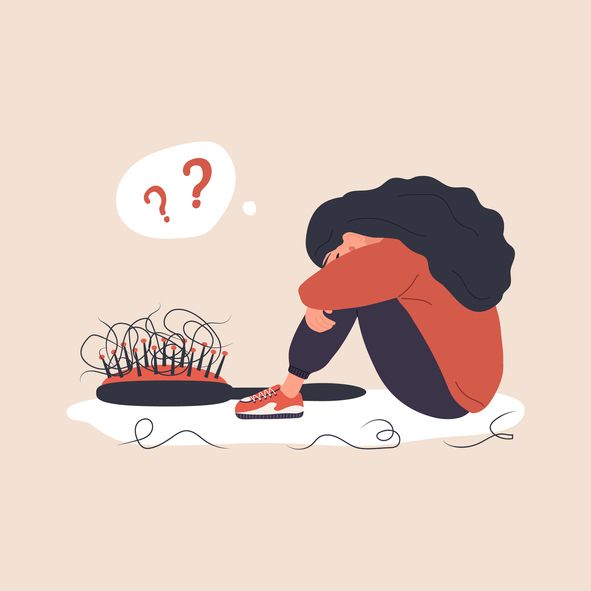
Identifying the early signs of a receding hairline can empower you to take proactive measures:
Thinning hair
One of the initial signs of a receding hairline is hair thinning, especially noticeable around the temples and forehead. This thinning manifests as a gradual reduction in the overall density of your hair in these areas. You may observe that individual hair strands appear finer and less robust than before. This early indication of hair thinning can be a pivotal moment, prompting individuals to become more attentive to changes in their hairline and overall hair health.
Widening forehead
As the hairline gradually shifts backward, it results in the creation of a more pronounced forehead. This transformation in the shape of the hairline is often characterised by a more prominent forehead and a receding appearance of the hair at the temples. This change can be a significant visual cue, signalling the onset of hair recession. It's crucial to pay close attention to these alterations and not dismiss them as part of the normal ageing process. Seeking professional advice at this stage can be immensely beneficial, as early intervention typically yields more effective results in managing hair loss and implementing appropriate treatments. Monitoring these changes and promptly addressing them can make a significant difference in preserving and promoting healthy hair growth.
3
What Causes Receding Hairlines to Happen?
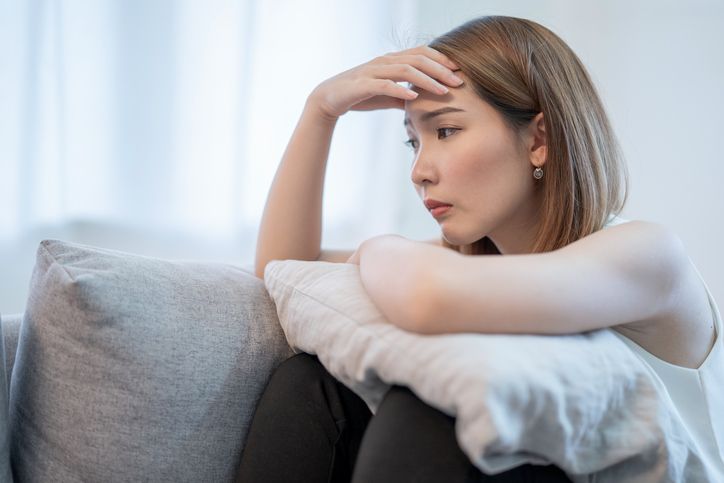
Understanding the causes of a receding hairline is crucial for effective management:
- Genetics: Hereditary factors play a significant role in hair loss. If your family has a history of receding hairlines, you may be genetically predisposed. This means that your genetic makeup can influence the sensitivity of your hair follicles to hormones like dihydrotestosterone (DHT), which can lead to hair thinning and recession.
- Hormonal Changes: Hormonal imbalances can also contribute to a receding hairline. Events such as pregnancy, menopause, or medical conditions like polycystic ovary syndrome (PCOS) can disrupt hormone levels. Elevated levels of androgens, a type of male hormone, can trigger hair loss in both men and women.
- Stress and Diet: High-stress levels and an inadequate diet lacking essential nutrients can contribute to hair thinning and receding. Stress may lead to hair loss by disrupting the hair growth cycle. Additionally, poor dietary choices can deprive your hair follicles of the nutrients they need to thrive.
- Hairstyling Habits: Your hairstyling habits can impact the health of your hair. Excessive use of heat styling tools, such as hair straighteners and curling irons, can damage hair follicles and lead to hair loss. Tight hairstyles like braids or ponytails, especially when worn frequently, can exert tension on the hair, causing it to weaken and recede. Chemical treatments like perming or colouring can also harm the hair shaft and follicles if not done cautiously.
4
Coping with Receding Hairline
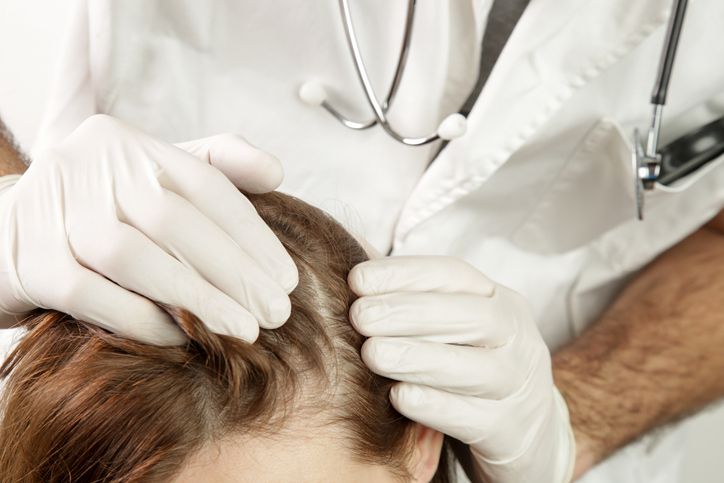
Coping with hair loss can indeed be a challenging journey, but there are several strategies and lifestyle changes that can help you manage and maintain your self-confidence. Choosing a hairstyle that compliments your receding hairline can make a significant difference in your appearance and confidence. Skilled hairstylists can offer expert advice on hairstyles that work best for you, taking into account your hair type, face shape, and personal style. Embracing a new hairstyle can be a positive step toward boosting your self-esteem and embracing your unique look.
However, if you are looking for something that can promote hair growth faster, here are several hair restoration options available for individuals dealing with a receding hairline. These options include:
- Hair Transplant Surgery: This surgical procedure involves the transplantation of healthy hair follicles from one part of your body to the areas with hair loss. It provides a permanent and natural-looking solution for restoring hair. - Topical Treatments: Over-the-counter topical treatments like minoxidil can stimulate hair growth and slow down hair loss when applied regularly. - Prescription-strength options are also available and may be recommended by a healthcare professional. - Oral Medications: Prescription medications like finasteride are taken orally and work by inhibiting the hormone responsible for hair loss (DHT). By reducing DHT levels, these medications can promote hair regrowth and prevent further thinning. - Platelet-Rich Plasma (PRP) Therapy: PRP therapy involves extracting a small amount of your blood, processing it to isolate platelet-rich plasma, and then injecting it into the scalp. PRP contains growth factors that stimulate hair follicles, encouraging hair growth and improving hair density. - Hair Transplant Surgery: Hair transplant surgery is a surgical procedure that involves the removal of healthy hair follicles from one area of your body (usually the back of the scalp) and their transplantation to areas with hair loss. This method provides a permanent solution for restoring hair and achieving natural-looking results.
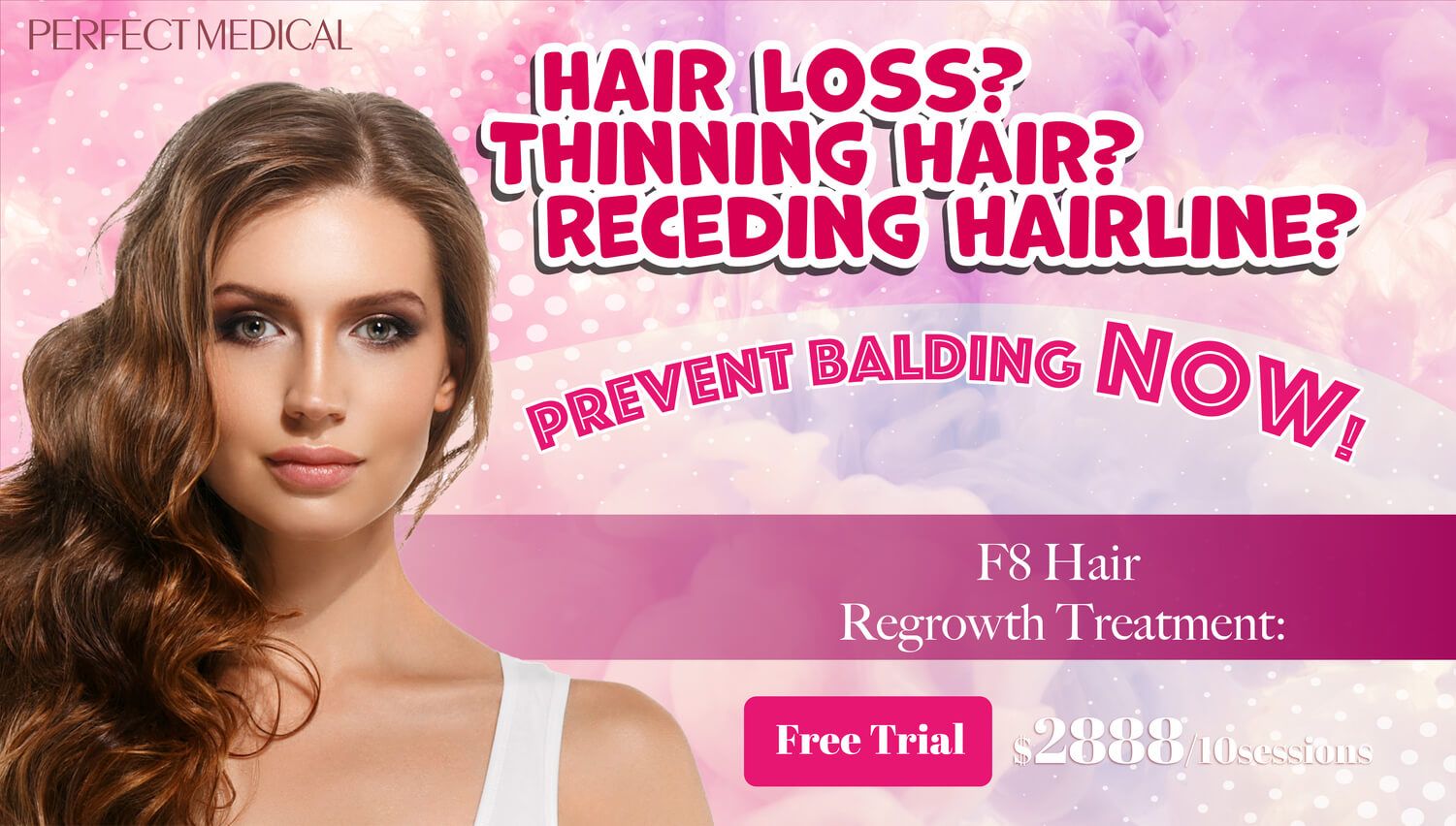
免費體驗
F8 Hair Regrowth Treatment
1 Minute Self-Registration
Date should not be before minimal date
5
What Makes Perfect Medical's F8 Hair Regrowth Treatment Different from All These Treatments?

Despite all the options above, some of them possess several risks and the result might not be as ideal as you think. In a world where the beauty industry continually evolves, Perfect Medical stands at the forefront of innovative hair loss solutions. Our groundbreaking F8 Hair Regrowth Treatment represents a revolutionary approach to addressing hair loss, setting it apart from conventional treatments in several significant ways.
Harnessing advanced science
At the heart of the F8 Hair Regrowth Treatment is cutting-edge scientific innovation. This treatment leverages the power of low-level laser energy to stimulate hair follicles and promote blood flow within the scalp. By doing so, it jumpstarts the natural process of hair growth, offering hope and results to those grappling with hair loss concerns.
A holistic approach
Perfect Medical's F8 Hair Regrowth Treatment takes a comprehensive approach to hair restoration. It combines the benefits of low-level laser energy with a medical-grade hair growth serum. This unique serum not only stimulates hair growth but also maintains a balanced oil production in the scalp, a crucial factor for the growth of healthy hair. This holistic combination ensures that your hair and scalp receive the care they need to thrive.
Tailored to severe hair loss
Our F8 Hair Regrowth Treatment is designed to address severe hair loss issues, including male pattern baldness, excessive hair fall, androgenetic alopecia, female pattern baldness, and more. It offers a ray of hope to those who have experienced significant hair loss, providing them with a specialised solution that caters to their unique needs.
Swift and non-surgical
One of the standout features of the F8 Hair Regrowth Treatment is its efficiency. Unlike many other hair loss treatments, this procedure is swift and typically takes less than an hour to complete. Moreover, it is a non-invasive process, eliminating the need for surgical intervention. As a result, patients do not have to endure lengthy hospital stays; they can return to their daily routines promptly.
A diagnostic approach
Our commitment to delivering effective results begins with a thorough assessment. Before administering the F8 Hair Regrowth Treatment, our in-house wellness professionals employ 200-magnification equipment to closely examine your scalp. This diagnostic approach allows us to pinpoint the root causes of your hair loss and tailor the treatment to address your specific issues.
Activation through low-level laser energy
During the treatment, our skilled therapists utilise the F8 Hair Regrowth Treatment's equipment handpiece to evenly distribute low-level laser energy across your scalp. This energy activation not only awakens dormant hair follicles and hair papilla but also enhances blood flow within the blood capillaries. This boost in blood circulation delivers essential nutrients to support hair follicle growth and fosters a healthier scalp environment.
Nurturing with clinical serum
Following the laser treatment, our therapists apply the hair growth serum evenly across your scalp. The low-level laser energy creates an optimal environment for serum absorption, allowing it to deeply cleanse hair follicles, remove excess oil, and hydrate the scalp. This nurturing environment provides hair follicles with the ideal conditions for stronger root growth.
In conclusion, Perfect Medical's F8 Hair Regrowth Treatment represents a unique and comprehensive solution for hair loss. With our commitment to innovation and personalised care, we stand as a beacon of hope for individuals seeking to regain their confidence through healthy, rejuvenated hair.
6
Post-Treatment Tips: 10 Ways for A Long-Lasting Healthy Hair Growth

1. Use recommended hair products
Consult with your healthcare professional or therapist for recommendations on hair products that complement the F8 treatment. They may suggest specialised shampoos, conditioners, or serums designed to support hair regrowth and scalp health.
2. Scalp massages
Gently massage your scalp in circular motions using your fingertips. Scalp massages can enhance blood circulation to the hair follicles, promoting faster hair growth. Consider incorporating natural oils like coconut or jojoba oil for added nourishment.
3. Dietary supplements
Speak to your healthcare provider about incorporating dietary supplements that support hair health, such as biotin, vitamin D, or omega-3 fatty acids. These supplements can provide the essential nutrients needed for optimal hair growth.
4. Regular follow-Up appointments
Maintain a consistent schedule of follow-up appointments with Perfect Medical. Regular check-ins allow us to assess your progress and make any necessary adjustments to your treatment plan.
5. Avoid smoking and excessive alcohol
Smoking and excessive alcohol consumption can have a negative impact on hair health. Quitting smoking and moderating alcohol intake can contribute to a healthier scalp and improved hair growth.
6. Reduce caffeine intake
Excessive caffeine consumption can lead to dehydration, which can affect hair health. Limit your intake of caffeinated beverages and opt for hydrating options like water or herbal teas.
7. Cool water rinses
When washing your hair, use cool or lukewarm water instead of hot water. Hot water can strip the scalp of its natural oils, potentially hindering hair growth.
8. Avoid tight hats and headbands
Avoid wearing tight hats or headbands that can exert pressure on the scalp. Opt for loose-fitting headgear to minimise any potential tension on the hair follicles.
9. Mindful hair handling
Be gentle when handling your hair, especially when it's wet. Avoid vigorous towel-drying or combing when the hair is still wet, as wet hair is more susceptible to damage.
10. Track your progress
Consider taking photos of your hairline at regular intervals to track changes and improvements. This visual record can help you stay motivated and gauge the effectiveness of the F8 treatment.
- Can You Actually Trust Hair Thickening Products?
- How Effective Is RGA Hair Follicle Regrowth Treatment? Can It Really Rival A Hair Transplant?
- Traction Alopecia: 5 Causes You Must Know + 4 Solutions To Stop Hair Loss With Ease!
- Top 3 Vitamins to Prevent Female Hair Loss: Do These 7 Superfoods Actually Work?
7
Conclusion

A receding hairline can be a source of concern for many, but it's essential to remember that you're not alone in this journey. Understanding the causes, exploring coping strategies, and considering effective treatments can help you regain your confidence and maintain a healthy head of hair. Embrace the options available and take proactive steps toward addressing your receding hairline. Still waiting for the miracle to happen? Enjoy new hair growth by taking our trial today!
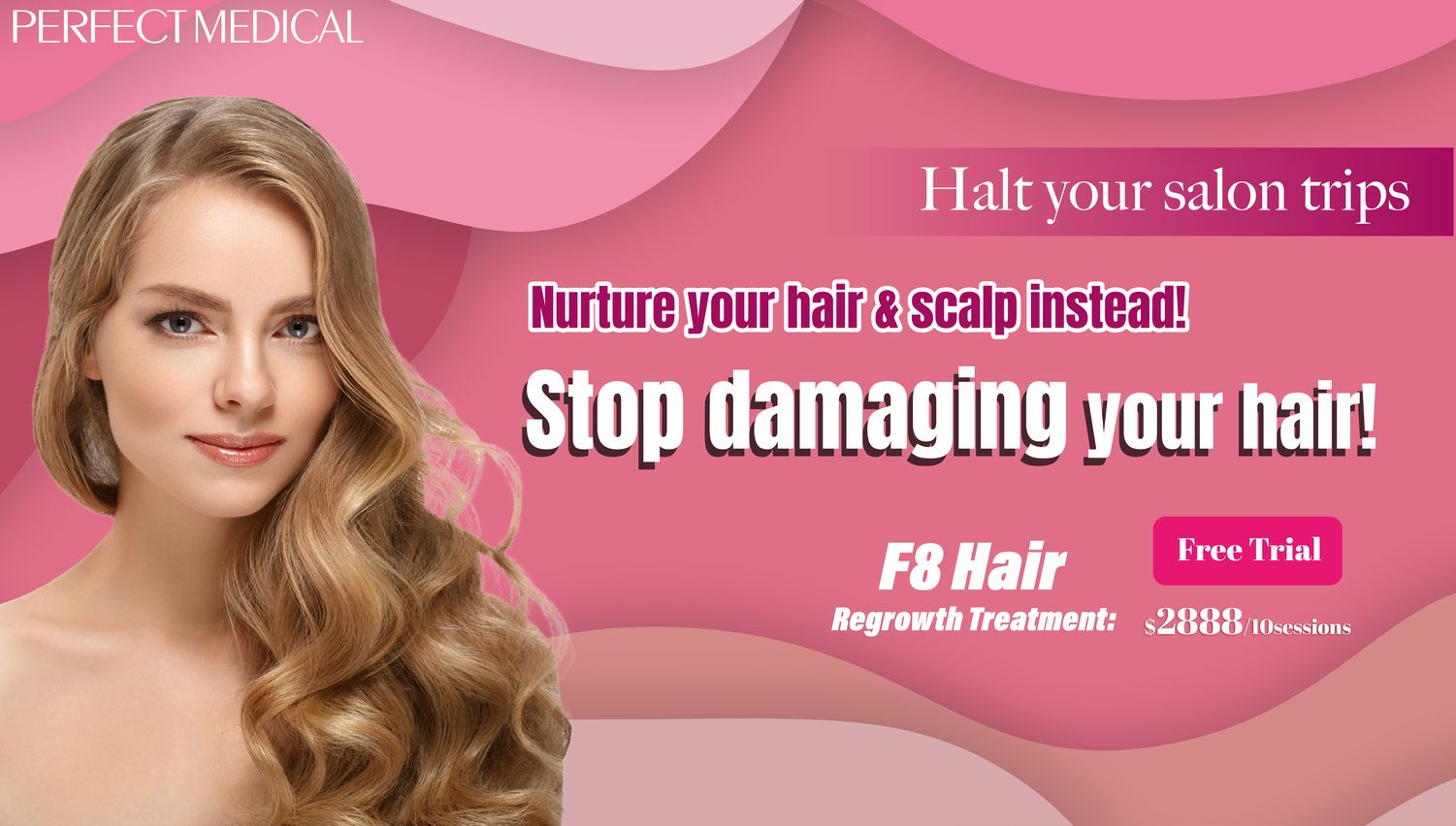
免費體驗
F8 Hair Regrowth Treatment
1 Minute Self-Registration
Date should not be before minimal date
FAQ

1. Can women experience a receding hairline?
Yes, women can also experience a receding hairline, although it is more commonly associated with men. Female pattern hair loss, often referred to as female pattern baldness, can lead to a receding hairline in women. It typically manifests as thinning hair around the part line or widening of the centre part.
2. Are there any natural remedies for a receding hairline?
While natural remedies may contribute to improved hair health, they may not provide a guaranteed solution for a receding hairline. Natural remedies such as a balanced diet, scalp massages, and the use of essential oils like rosemary or lavender may support overall hair health and potentially slow down hair loss. However, it's essential to manage expectations, as natural remedies may not reverse severe hair loss.
3. How long does it take to see results from hair restoration treatments?
The timeline for observing results from hair restoration treatments can vary depending on the specific treatment method used. For example, treatments like minoxidil or laser therapy may require several months of consistent use before noticeable improvements occur. Hair transplant surgery, on the other hand, may yield more immediate results, but the final outcome may take up to a year to fully appreciate. Patience and adherence to the treatment plan are key to achieving successful outcomes.
4. What are the differences between male pattern hair loss and female pattern hair loss?
Male pattern hair loss (androgenetic alopecia) and female pattern hair loss share some commonalities but also exhibit notable differences in their presentation and underlying factors. In men, male pattern hair loss typically initiates with a receding hairline at the temples and thinning at the crown, eventually forming the recognizable M shape. In contrast, women experiencing female pattern hair loss tend to have diffuse thinning across the crown area and a widening of the part line, without significant receding at the temples. Hormonal factors play a distinct role as well; male pattern hair loss is associated with elevated levels of dihydrotestosterone (DHT), a male hormone, while female pattern hair loss can be influenced by hormonal changes related to menopause, pregnancy, or hormonal disorders. Furthermore, the progression and response to treatment may differ, with male pattern hair loss often being more progressive and leading to potential complete baldness, while female pattern hair loss typically results in diffuse thinning without complete baldness.
5. Can having stress causes a receding hairline?
Yes, chronic stress can contribute to hair loss, including a receding hairline. Stress-induced hair loss is often referred to as telogen effluvium, and it can lead to increased shedding of hair. Managing stress through relaxation techniques, exercise, and stress reduction strategies is essential for maintaining healthy hair and potentially preventing or slowing down a receding hairline.






